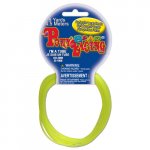Ryno17
Member
- Joined
- Feb 11, 2013
- Messages
- 46
Hey Folks, I'm looking for some guidance from those of you who nymph without an indicator and incorporate a sighter into your leaders. I've done much reading and youtube viewing but one detail eludes me. I'm trying to get a better understanding of the role the sighter section of the leader plays or at least how you guys make it work for you. From what I can understand the obvious answer is to make it easier to locate your leader in the water and to signal a strike. I think I understand that. Where I'm confused is… Is the sighter what I should always be watching to signal a strike ? This seems practical when the sighter section is at the correct level to the water to do so but what about when it isn't ? In other words, if I'm fishing a shallow section of water and my sighter is, say 16" above the water's surface, should I watch the clear part of the leader to signal a strike ? Conversely, what if it's deeper water ? I've read that the proper setup is to construct a leader that will work in "the average depth of the stream you're fishing" but we all know there's no cover-all in most situations. I guess I could adjust the tippet as I would weight as I do when using an indicator but this seems slightly impractical. I hope I explained my confusion clearly and thanks for taking the time to read and for any advice you have to offer.




